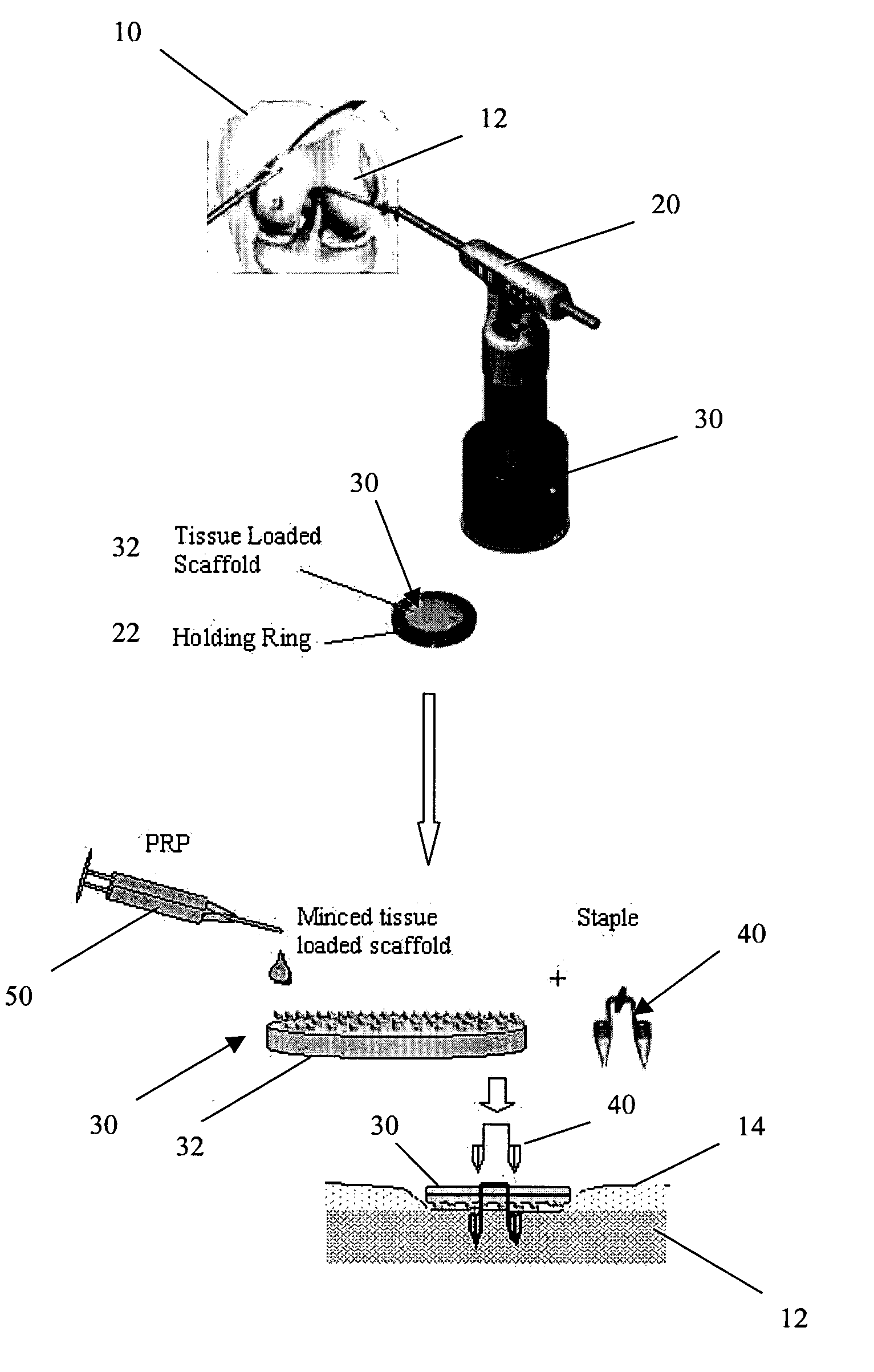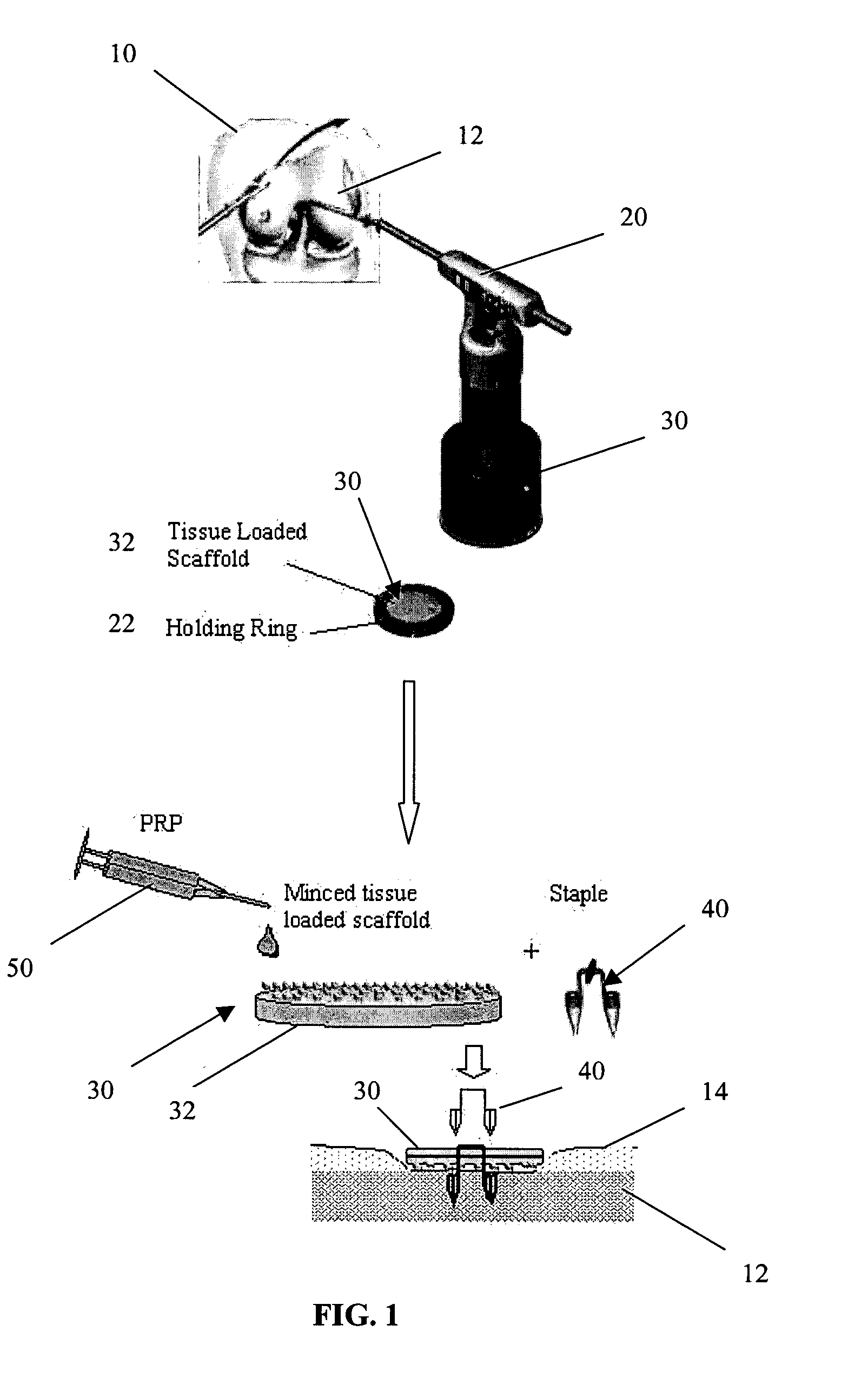Method and apparatus for resurfacing an articular surface
a technology of articular cartilage and resurfacing, which is applied in the direction of surgical staples, ligaments, prostheses, etc., can solve the problems of gradual destruction of cartilage and underlying bone of the joint, development of osteoarthritis, and inability to spontaneously heal injuries to the articular cartilage tissu
- Summary
- Abstract
- Description
- Claims
- Application Information
AI Technical Summary
Problems solved by technology
Method used
Image
Examples
example 1
[0100] The primary objective of this study was to test implant retention for resurfacing large chondral defects in a high weight-bearing condyle area such as in the knee joint.
[0101] A. Creation of Chondral Defect
[0102] Defects were created on weight bearing contour of the medial femoral condyle (MFC) of eight (8) goats. The MFC's were accessible from medial arthrotomy in a randomly assigned stifle. The removal of full thickness cartilage (ICRS Grade 3) was achieved by the use of scalpel and curettage. Cartilage was manually removed to the level of subchondral tidemark, but to make sure that the bone was not visibly exposed. Two sizes of defect were tested in this study, 20×20 mm rectangular and 7 mm circular. There was one defect per stifle per goat.
[0103] B. Implant Preparation
[0104] For this implant retention test implants were prepared by loading fibrin glue onto the pre-wetted scaffold of appropriate sizes. The composition of the scaffolds used was a 95:5 copolymer of lacti...
PUM
| Property | Measurement | Unit |
|---|---|---|
| surface area | aaaaa | aaaaa |
| elongation | aaaaa | aaaaa |
| elongation | aaaaa | aaaaa |
Abstract
Description
Claims
Application Information
 Login to View More
Login to View More - R&D
- Intellectual Property
- Life Sciences
- Materials
- Tech Scout
- Unparalleled Data Quality
- Higher Quality Content
- 60% Fewer Hallucinations
Browse by: Latest US Patents, China's latest patents, Technical Efficacy Thesaurus, Application Domain, Technology Topic, Popular Technical Reports.
© 2025 PatSnap. All rights reserved.Legal|Privacy policy|Modern Slavery Act Transparency Statement|Sitemap|About US| Contact US: help@patsnap.com


